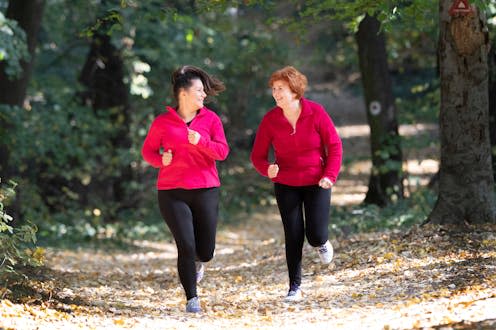Why you shouldn’t be afraid to start running after middle age

As someone who started marathon running in mid-life, I know how many aches and pains (and doubts) you can have if you take on the challenge to start running at an older age. But as an orthopaedic surgeon who has replaced thousands of worn-out hips and knees throughout my career, I also know just how much exercise actually helps the joints.
Hobbling around my orthopaedic hospital after my first marathon actually led me to do research on runners. After conducting 1,000 MRI scans of the joints of mid-life exercisers (both runners and cyclists) and “couch potatoes”, I now better understand just how beneficial mid-life running is for the knees, hips and spine.
The findings were very surprising to me, particularly in the knee study. The high-resolution MRI scans found most of the 115 middle-aged participants had abnormalities in their knees before starting marathon training. Half of these abnormalities would typically have required keyhole surgery in the past.
But none of the knee abnormalities stopped them from finishing the marathon. And, in the MRI scans conducted after the marathon, they had no signs of deterioration in their joints. This totally changes how we can advise would-be runners who are found to have an abnormality on MRI scan of their knee.
Astonishingly, we also found that the bones of some runners improved after the marathon. In ten volunteers who had changes in their bone marrow that would normally have signalled pre-arthritis (which occurs before even other early signs of arthritis do), these signs vanished on the MRI after the marathon.
A commonly held belief is that exercise damages joints and may lead to osteoarthritis (sometimes referred to as “wear-and-tear arthritis”) later in life. But while osteoarthritis is more common after middle age, it may actually be a lack of activity that leads to osteoarthritis. The more a joint is used, the stronger it makes the bone and muscle around it.
Studies on inactivity have shown that for bones to remain healthy, our skeleton needs to be stimulated by mechanical load (physical stress) – such as the impact of walking or running. Both bed rest or zero gravity in outer space result in reduced quality and strength of bone (osteopenia and the more severe osteoporosis).
This is because our bones are alive, with cells constantly building and removing bone. Mechanical force is necessary to stimulate the cells that build bone and inhibit the cells that take away bone.
Running provides a very good stimulus for the bone building cells. Having healthy bone underneath the joint surface is particularly important for avoiding osteoarthritis.

Inactivity also causes muscle wasting (sarcopenia), which affects how the joints move. Reduced muscle use, whether it is through inactivity or sarcopenia or both, also reduces the production of anti-inflammatory myokines from the muscles.
These chemicals are released when we exercise, and help reduce joint swelling and calm irritated joint linings. This effect is pronounced in runners because running uses some of the largest muscles in the body – such as the glutes, quadriceps and hamstrings.
Another benefit of exercise is it improves the way our cartilage surfaces move over each other. This keeps the joint stable when we move and ensures any pressure is placed evenly on the joint’s surface.
Strength and conditioning exercises (such as using resistance bands or doing reformer pilates can improve muscle function and therefore cartilage function even further – especially for the cartilage in our main limb joints.
Where to begin
In general, the best way to support our joints involves a combination of different exercises, including muscle resistance (such as strength training), bone impact (such as running) and stable joint movement (such as cycling).
If you want to start running, the main message is to ease into it to reduce the risk of injury. This should help reduce your risk of injury.
One of the best ways to ease into running in mid-life is the NHS Couch to 5K running programme. It’s a free guide that will help you gradually work up towards running 5km in just nine weeks. It’s also designed for everyone – including absolute beginners.
The plan involves three runs a week, with a day of rest in between, and a different schedule for each of the nine weeks. It also uses a mix of running and walking to build your fitness and stamina. This helps avoid overdoing it and giving up.
Of course, there are some instances where running may damage our joints. These are usually because of past injury – such as when there’s a broken bone extending into the joint, causing uneven cartilage surface.
Another example is when a ligament has ruptured, and the joint becomes unstable. An unstable joint will move abnormally and may damage the cartilage. An unstable joint may also be caused by abnormal muscles around the joint.
If you’ve experienced any of these problems, you’ll want to be careful when exercising to avoid further damage. It’s best to speak with your doctor to come up with an exercise plan that works for you.
Running is a great way to keep bones and muscles healthy, helping prevent damage and even osteoarthritis. Just make sure to take it slow at first.
This article is republished from The Conversation under a Creative Commons license. Read the original article.

Alister Hart receives funding from 3 charities: The Rosetrees Trust, Arthroplasty for Arthritis and The Maurice Hatter Foundation.

 Yahoo News
Yahoo News 
